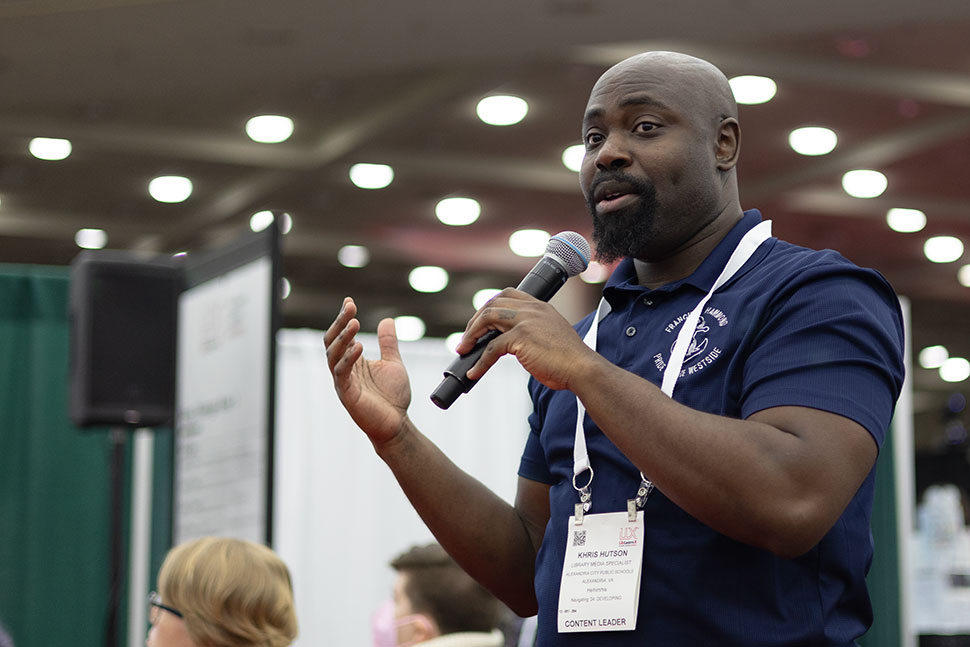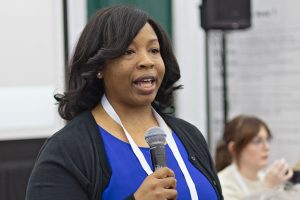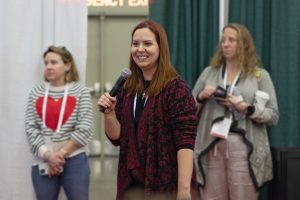
When Kaycie Hoffman Blaylock first began working at Alexandria (Va.) City Public Schools (ACPS) as libraries and curricular resources instructional coordinator in fall 2022, she noticed that the library inside the district’s Francis C. Hammond Middle School (FCHMS) was underused.
The average collection date was 2002 and the average circulation rate was 461 books per month. Since Blaylock and FCHMS’s library media specialist, Khris Hutson, began making improvements last January, they have raised the collection date to 2008—and in fall 2023, they recorded 1,277 books circulated per month. This is one of the ways that FCMHS has become a turnaround library, Blaylock said.
A turnaround library aims to “create community and to have people use [it] and appreciate it,” Blaylock said. At “Collaboration and Learning Strategies for Turnaround Libraries,” a January 20 session at the American Library Association’s 2024 LibLearnX conference in Baltimore, Blaylock and Hutson shared improvements they made, including four methods they used to elevate the library:
- Look At Me. Engage in shameless self-promotion of the library and bring to light the work that librarians do.
- Look at the Library. Invite people into the space and advertise the resources offered.
- Look Better. Curate and rearrange the library to make it look more presentable and inviting, which can be as small as sorting books into categories or as large as seeking donations from local companies and businesses for new furniture.
- Look at Us. Have students and staff members participate in promoting the library
For example, Hutson created promotional videos for the library starring FCHMS community members, from popular students who want to talk about books (and in turn, influence other students to check out those books) to staff members who volunteered to help boost the library. “You’ve got people who normally would not talk to each other suddenly talking to each other,” Hutson said. “And you’ve got people watching these videos, who normally would not be interested in a book, hearing about the book from someone that’s not me.”
Blaylock also highlighted the importance of garnering participation from management by inviting them to the library often for meetings so that they’re more cognizant of its needs—especially when they’re more dire. “We realized that if no one came into the space, no one would ever know that it needed help,” Blaylock said. “We didn’t want to hide that or always have our meetings at the ‘pretty’ middle school library. We wanted to make sure that people were realizing the potential that [Hutson] had in that space.”


